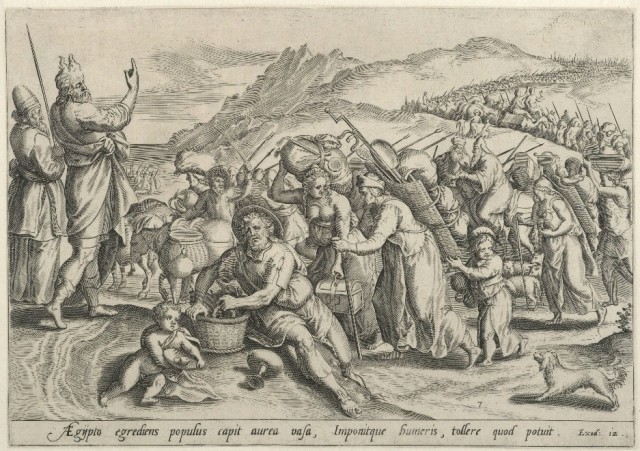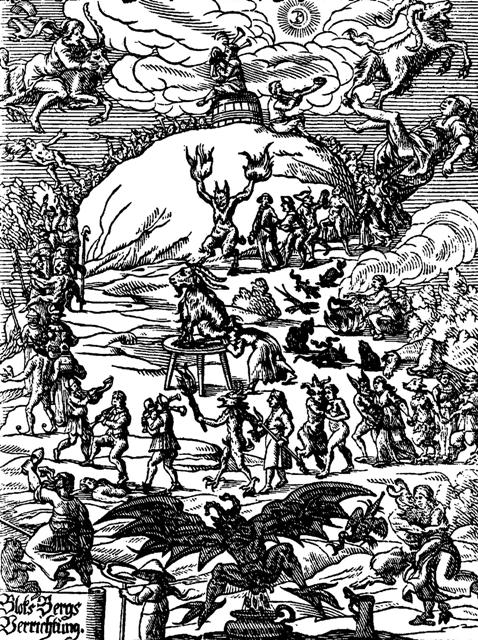Мы продолжаем напряженно работать, чтобы улучшить наш сайт и перевести его на другие языки. Русская версия этой страницы еще не совсем готова. Поэтому мы представляем здесь пока английскую версию. Мы благодарим вас за понимание.
Временные рамки
The biblical story
The biblical events of the novel start in the morning of the fourteenth day of the spring month of Nisan to end late in the night of the Jewish feast of Passover. Nisan is, according to the civil calendar, the seventh month of the Jewish lunar calendar. Originally, according to the ecclesiastical calendar, it was the first month. The fifteenth day of Nisan (beginning at the sunset of the fourteenth) is the start of the feast of פסח [Pesach], derived from Pasach or passing over. This refers to the tenth plague of Egypt, described in the book Exodus 11: 4-10 and 12: 29-30 from the Old Testament. God wanted to punish the Egyptians by sending an angel of death who would kill all the firstborns in Egypt, except those of the Israelites. They had to cover the lintel and the posts of their doors with the blood of a sacrificed lamb, so that the angel would «pass over» their houses. After this plague, the Pharaoh allowed the Jews to leave the country, and the exodus from Egypt began, a journey that would last forty years, and which would bring the Israelites to the Promised Land under the guidance of Moses.

Смерть первенца - Ян Луйкен (1708)
The fifteenth day of Nisan is the day of the full moon, because the jewish months start on the day following the new lunar crescent. Passover or Pesach is also known as the spring feast, the freedom feast, or the feast of matza, commemorating the exodus of the Jews from Egypt.
Traditionally it is assumed that the fourteenth day of the spring month of Nisan on which Christ was crucified, was on a Friday. Because we know from the bible stories that Jesus had to be burried soon after he died, before dark and the start of the sabbat, which is always on a Saturday.

Исход из Египта - Ян Саделер I (1585)
The actions in Moscow
The action in Moscow starts on a Wednesday evening. We know that because chapter 9 describes how Nikanor Ivanovich Bosoy «had been having the most terrible troubles, starting from that Wednesday night», when Berlioz had been decapitated. He began to receive telephone calls and then personal visits of people claiming the apartment of the deceased which was now available.
The seance of Woland at the Variety Theatre takes place the next day, on Thursday. At the beginning of chapter 17 we read that the staff of the Variety Theatre gathered on Friday morning, «the day after the accursed seance», while the dog Ace of Diamonds was looking for traces. That same Friday, Maksimilian Andreevich Poplavsky, the uncle of Berlioz, and buffet master Andrey Fokich Sokov are thrown out of the cursed apartment, and the meeting between Margarita and Azazello takes place. That same evening, Margarita becomes a witch to fly to Woland's ball, which takes place on the night from Friday to Saturday.
The last stunts of Koroviev and Behemoth take place on Saturday, and during the night from Saturday to Sunday, Woland and his retinue left Moscow. During that night the master finds peace, and Pilate grace.
Similarities
This chronology of the Moscow story shows not only strong similarities with the Jewish Passover, but also with the second part of the Christian Easter week or the Holy Week, more specifically from the eve of Maundy Thursday to the night of Saturday to Sunday, the night of the Resurrection of Christ.
At the beginning of the novel, Bulgakov writes that the discussion between Berlioz and Bezdomny at the Patriarch's Ponds took place on «a dreadful May evening» (Richard Pevear and Larissa Volokhonsky) or «a terrible day in May» (Michael Glenny). Many critics see this as proof that the Moscow scenes from The Master and Margarita can never play in the Easter week, because the Christian Easter always falls on a Sunday between March 22 and April 25, and never in the month of May.
But this statement is based on a misconception. The Russian Christians, after all, profess the orthodox doctrine, in which Easter is celebrated on a Sunday between April 3 and May 9. For the orthodox Christians, Easter can indeed fall in the month of May. Between 1928 and 1940, the period in which Bulgakov wrote The Master and Margarita, it happened even three times: on May 5, 1929, May 1, 1932, and May 2, 1937.
The Walpurgis Night
According to the French Bulgakov expert Marianne Gourg, Woland's ball coincides with the Walpurgis night and its witches' sabbath, which is celebrated each year on the night of April 30 to May 1 in large parts of northern and central Europe.
This statement is less likely. Indeed, if the scene at Patriarch's Ponds took place on «a dreadful May evening», as Bulgakov wrote, the Walpurgis Night was already past.
For the trivia: in 1932, when Bulgakov was working on the third version of The Master and Margarita, the Orthodox Easter and the Walpurgis Night were celebrated on the same day. But this can not be a reason to situate Woland's ball on Walpurgis Night either because, in such case, Berlioz and Bezdomny would have had their conversation at the Patriarch's Ponds on «a dreadful April evening», quod non.

Вальпургиева ночь - Йоханнес Преториус (1668)
Calendar issues
It is not always easy to link dates from the Soviet history to our current calendar system. After all, the Soviet regime changed its calendar system more than once.
In 1929 a radical change in the era had to take place. On August 26, the Council of People's Commissars of the Soviet Union issued a decree to abolish both the official Gregorian calendar - installed by Lenin - and the Julian calendar - which was still used by the Russian Orthodox Church. They wanted to introduce a new calendar, in which the weeks were changed and the earlier religious holidays were replaced by days off related to the Revolution.
This Советский революционный календарь [Sovietsky revolyutsionny kalendar] or Soviet revolutionary calendar, commonly called the Eternal Calendar went into effect on October 1, 1929. But in 1931, the fuzz was already over. The revolutionary calendar turned out not to be eternal. The five-day week and staggered rest-days were replaced by another system. This new plan provided for a 12-month year with the same holidays as before and the same extra day for leap years, but a new week of six days was introduced wherein the rest-day came regularly on the 6th, 12th, 18th, 24th and 30th of the month.

30 февраля 1930 г.
You can read much more on the calendar issues in the Soviet Union in the Context section of this website using the arrow below.
From 1940 onward, the Soviet Union returned to the Gregorian calendar with its seven-day week, using Sunday as a rest-day. By this latest action the government returned to the idea of Lenin, and Russia is again using the same calendar as «all the civilized countries of the world.»





